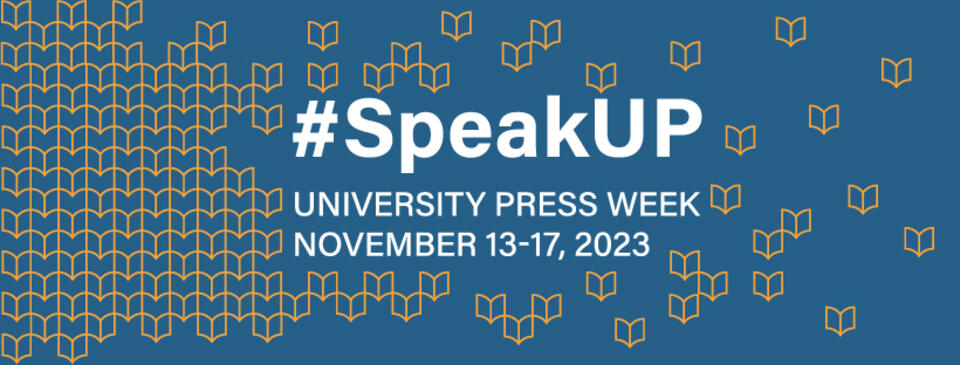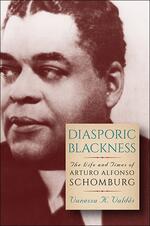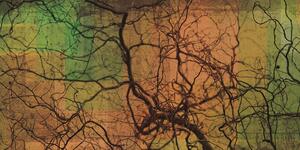
UP Week 2023: Where Does Your Press #SpeakUP?
This guest post by Vanessa K. Valdés was originally published in June of this year, and we're representing it in honor of University Press Week. Every year, the Association of University Presses (AUP), of which we are a proud member, takes a tour of UP blogs. This daily series addresses different aspects of the week’s theme. This year, blog tour posts will examine ways that university presses Speak UP, or give voice to the scholarship and ideas that shape conversations around the world.
In December 2020, I received an email from David Pullins, Associate Curator of European Paintings at The Metropolitan Museum of Art: he was several months into researching Juan de Pareja (1608-1670), the sitter of one of Diego Velázquez's most famous portraits. David was new to The Met, and during his interview the year prior, he had been asked his thoughts on a hypothetic exhibition centering this portrait, which The Met had purchased in 1971. By the time of our initial conversation that December, he had compiled a bibliography that was rather full in the 18th and 19th centuries, and then unexpectedly light in the 20th century. As David puts it, Juan de Pareja was more famous in the 19th century than he was in the 20th or 21st. As he continued his research, he came upon an article published in a 1927 issue of the Crisis, the literary magazine of the National Association for the Advancement of Colored People (NAACP) headed by renowned sociologist W. E B. Du Bois. The essay, “In Quest of Juan de Pareja,” was written by one Arthur A. Schomburg, the subject of my book, Diasporic Blackness: The Life and Times of Arturo Alfonso Schomburg (2017). It was the sole article written about Juan de Pareja in the early decades of the twentieth century. Having read my book before reaching out to me, David was familiar with Mr. Schomburg’s lifelong mission to recover global Black history. During that conversation, I offered a context for the article, saying that Mr. Schomburg had written it after the 1926 sale of his private collection to the Carnegie Corporation, which had purchased it for the express purpose of donation to the 135th Street Branch Library’s Division of Negro Literature, History, and Prints. The sale earned Mr. Schomburg $10,000 (roughly $171,000 in 2023 terms) and with that money, he sailed to Europe with the intent of visiting archives, churches, museums, libraries, and universities across the continent. June 12th, 1926, his ship sailed out of New York Harbor, arriving two weeks later in Seville, Spain, where Mr. Schomburg disembarked and went immediately to the Archivo de las Indias, one of the most important archives for those interested in the Spanish Empire’s colonization of the Americas. He would go on to visit several countries on that trip, but upon his return, he would have four articles published about early modern Spain and its communities of people of African descent, including one focused on Juan de Pareja.
That initial conversation was two hours long, during which I expressed my enthusiasm for the exhibition as it was taking shape, as David by then already knew the space in the museum in which the exhibition would be held, the Lehman Gallery, and he already had determined three narratives he wanted to feature: a section dedicated to offering visitors a context for 17th-century Spain, one emphasizing the importance of enslaved labor in the urban, artisanal context of Seville; another dedicated to the 1650 historical moment in which Diego Velázquez painted the portrait of Juan de Pareja and Pope Innocent X and freed Pareja, who had lived enslaved in Velázquez’s household for approximately two decades; and a third dedicated to Pareja’s successful career as a painter in his own right. As someone who had focused on representations of Black men and woman in the early modern period of the Spanish empire for a class while in graduate school, and as a scholar of Afro-Latin American and Afro-Latinx Studies, I understood immediately how powerful this exhibition would be. Few people outside of specialists know the role of the Spanish empire in the transatlantic slave trade: in the United States, our images of enslavement are often placed in the US South and as a consequence of British colonization, not the Spanish incursions into this hemisphere made most famous by Columbus’s 1492 expedition. A free Black man named Juan Moreno accompanied Columbus on his voyage, which had left from Seville; a slave trade targeting Africans had already been in place on the Iberian peninsula for decades by then. Within a decade, the Spanish Crown granted the trafficking of enslaved Africans into their new territories in the Caribbean. I shared all of this with David, along with the names of scholars I knew working on this area: a couple weeks after our Zoom call, he invited to join him as co-curator of his exhibition.
From that moment in January 2021, David allowed me the opportunity to join him in almost every aspect of this curation: the composition of our advisory committee; the selection of the title – Juan de Pareja, Afro-Hispanic Painter; the editing of the catalog, the composition of our respective essays and the wall labels throughout the exhibition, the form of the beautiful polyvocal audio guide, and the programming that would accompany the exhibition. I had an equal say in all of these steps, and interfaced regularly with many of the departments of The Met. My primary responsibility was figuring out a way in which to integrate Mr. Schomburg in the larger narrative: for David, finding Mr. Schomburg’s article meant that the relationship between Juan de Pareja and New York City began not in 1971, with The Met’s purchase of the Velázquez portrait, but decades before, in Harlem and during the Harlem Renaissance. Initially, we considered featuring Mr. Schomburg’s role as a patron of the arts in his own time, before it occurred to me that on that 1926 trip, he was looking for things from 17th-century Spain. With the assistance of friends and colleagues at the Schomburg Center for Research in Black Culture, I obtained the list of almost three thousand books and pamphlets that had been identified as his 1926 seed donation to the 135th Street Branch Library – thank you, Cheryl Beredo, Barrye Brown, and Allison Hughes of the Manuscripts, Archives, and Rare Books Division -- and selected seven works published in the time period and one that was specifically about the history of Seville that featured Mr. Schomburg’s notes. I also shared with David that Mr. Schomburg had taken photographs while he was in Spain, and the unbound album leaves which included his handwritten captions were housed in the Photographs and Prints Division; with the assistance of Dalila Scruggs, curator of that division, we were able to secure them as a loan. Finally, as a way to further integrate his voice and assisted by our research assistant Chayanne Marcano, I went through his extant writings about Spain and selected quotes which would be used throughout the exhibition. In this way, Mr. Schomburg would serve as a guide to the visitor: his would be the narrator’s voice. We convened our advisory committee three times in 2021-2022, and with their encouragement and support, we were able to stay focused on revealing what, for many, has been an unknown history about Spain.
In Diasporic Blackness, I wrote that one of the misconceptions about Mr. Schomburg was that he had turned his back on his Puerto Rican compatriots; I argued that he had, instead, amplified the definition of global Black history so that it included communities of Africans and their descendants as having lived not solely on the African continent and in the United States but throughout the Americas, on the European continent and in Asia. While he was a member of a network of African Americans involved in the work of recovering these histories, he was, to my understanding, the only one who kept emphasizing the role of Spain in the Atlantic slave trade and the histories of Black Latin Americans within that of a global African diaspora. Mr. Schomburg insisted that Black peoples across the globe needed to recover their deliberately erased and ignored pasts in order to more effectively combat white supremacy in all of its iterations. He modeled this act of recovery in the materials he collected, the subjects of his writings, the exhibitions that he curated, and the talks he gave. Juan de Pareja was emblematic of a people who did not allow enslavement to define them; instead, in the last sixteen years of his life, those lived in freedom, he rose to be an artist whose commissioned work include his masterpieces The Calling of St. Matthew (1661) and The Baptism of Christ (1667). Pareja was but one example of a number Mr. Schomburg assembled to demonstrate the valor of the global African diaspora; a sample of his work is now on display at The Metropolitan Museum of Art until July 16, 2023.
Vanessa K. Valdés is Associate Professor of Spanish and Portuguese at the City College of New York, City University of New York. She is the editor of Let Spirit Speak! Cultural Journeys through the African Diaspora and the author of Oshun's Daughters: The Search for Womanhood in the Americas, both also published by SUNY Press.


